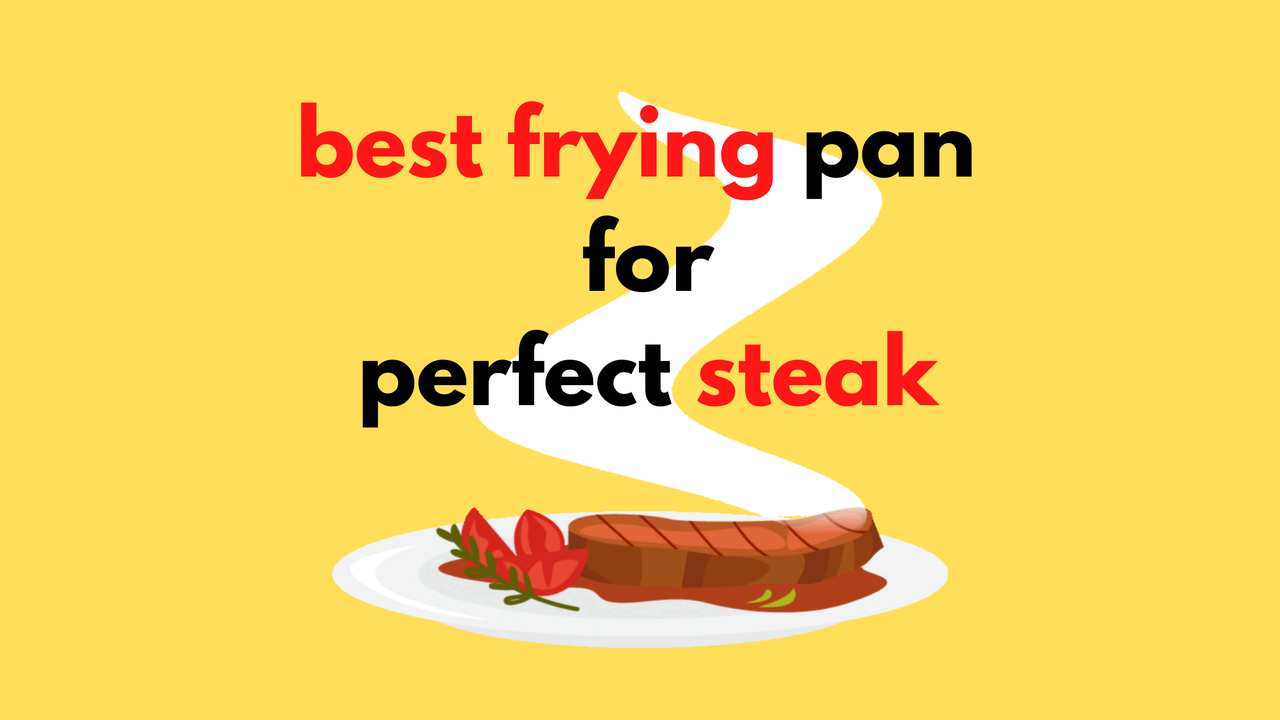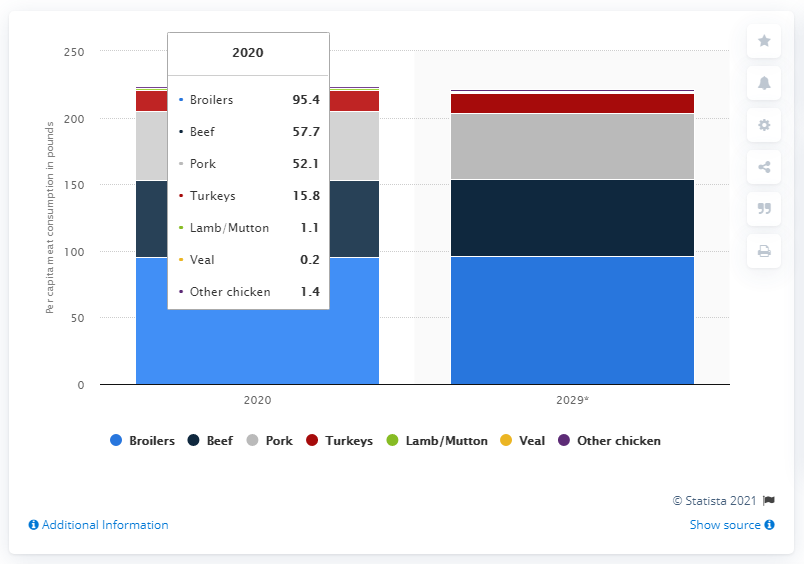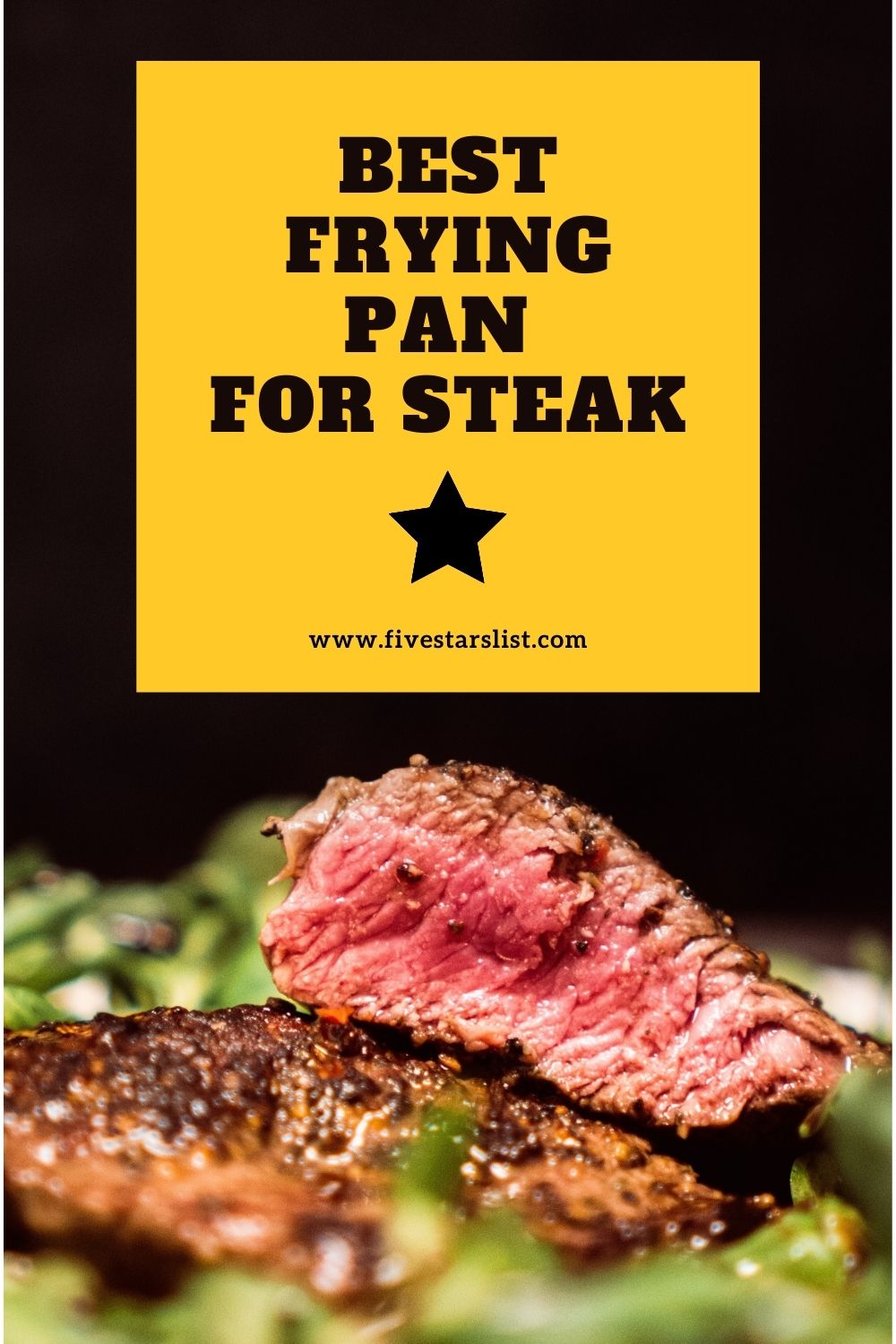As an Amazon Associate I earn from qualifying purchases.

Graphic by fivestarslist.com
There is a whole bunch of recipes for a perfect steak, but we rarely get the chance to check what type of cookware the chefs are using when it comes to searing steaks.
The average American eats almost ten ounces of meat a day (actually the exact number is 9.80 ounces). Chops and steaks are the most preferred ways of consuming meat, at least when it comes to the USA population.

Statistic of meat consumption per capita in the USA by Statista
As with everything, there are a lot of different ways to do something, and the way you pick depends a lot on your personality, among other different factors. The same goes for preparing a perfect steak.
The method I’m using when I’m preparing the beef steak is known as dry-heat cooking. It actually allows the meat to brown and gives it a special flavor. You’ll agree that these are all the characteristics of a good old yummy steak.
“I hate reality but it’s still the best place to get a good steak.”
Woody Allen
Marinate the steak overnight – coat it with olive oil and season with a mixture of spices consisting of salt, pepper, onion granules, and garlic granules and coat it with mustard on one side only. When it comes to drying out the steak the salt is your best friend, so don’t spare on salt. It will dry out the meat before being absorbed into it. You want an absolutely dry steak when it hits the surface of the pan.
Seasoning the Steak
The combination of flavor and meat is extremely important since they need to share a geographical and seasonal affinity. Thyme and rosemary are sometimes a “must” to include in seasoning.
The time of searing the steak depends on the thickness of the steak and the heat temperature. When it comes to heat temperature, and degree of doneness we have four types of steaks – medium-rare (145°), medium (160°), medium-well (165°), well-done (170°).
Heat your cast iron for about 10 minutes.
Take the steak, and make sure to put the side covered with mustard on the bottom. Once you place it in the pan – leave it and pay close attention to what’s going on with the edges of the steak. That way you’ll be able to follow the progress of browning and that’s the only way to get a fine nice crust on the steak. Once you’re sure the bottom is crusty enough, turn the steak on the other side. Use your intuition – as in other spheres of everyday life. This ability is extremely useful when it comes to cooking.
Then put a thermometer in and sear at any temperature until it’s 120/125 degrees internal.
The Best Frying Pan for Steak – Cast-Iron Skillet
Lodge Pre-Seasoned Cast Iron Skillet with Assist Handle

When it comes to basic cookware items, here is one of them. If you’re more like a fan of the classic way of doing things, then this iron cast skillet is the right choice for you. It’s nothing fancy, but who says pan should be fancy? It’s 10 inches large cast-iron skillet pre-seasoned with natural vegetable oil. It evenly distributes the heat and it’s suitable for use in the oven, on the stove, on the grill, or over a campfire. Also, it’s used for frying, searing, sautéing, baking, broiling, and grilling – literally, you can use it for cooking in any possible way.
Personally, it’s my favorite pan.
Check PriceCast Iron – The Best Pan for Frying Steak
If you’ve carefully followed the article, you’ve probably noticed I’m using a cast iron pan. The reason? Cast iron is naturally non-stick; cast iron pans are inexpensive and they can last forever.
Nothing beats cast-iron pans when it comes to searing. Why? Well, basically, the quality of the cookware depends on one factor only – its weight. Heavyweight pans have a higher thermal mass. Higher thermal mass means more meat flavors and juices will be kept in the final result. Also, it holds the temperature high, which further means even browning of the steak.
To put it simply, when searing the steak thermal mass is needed to keep all the flavors and juices coming out from the meat cells during the process of searing. Thermal mass actually makes some kind of shell that keeps all those flavors and moisture together. The result is perfect rich-flavored steak. High heat brings out flavors you’re missing if you’re using some lightweight pan – the heat from the pan drives them continuously through the meat.
Searing Steak – An Amateur Cook Tips
- When choosing the piece of meat make sure it has a consistent color
- ¼ inch layer of fat is just right enough
- Choose always a slice of fresh meat – use your nose – the smell is the most important indicator of meat freshness
- You want to sear at a really high temperature so you need oil with a high smoke point – olive oil, granola oil, avocado oil, or generally any kind of vegetable oil – although some guys prefer to use bacon fat.
- Some people don’t even use butter or oil; they sear the steak in its own fat. The exceptions for this are the steaks without any visible fat, like sirloin.
- I prefer to use a small amount of butter in combination with olive oil – the butter alone burns within seconds, but in combination with olive oil, it gives some buttery nutty flavor to the steak.
Enameled Cast-iron Skillet
Le Creuset 9 inch skillet

Great looking and thick skillet
Now, this heavyweight pan will do all the heavy-duty work for perfectly fried steak with just a drizzle of oil olive (you can give a try to light sesame oil, too ). It comes with an enamel coating, which means it requires no additional seasoning like other cast iron cookware. Also, since it’s so heavy in all possible meanings of the word, you need a steady and large handle for a better grip, and that’s exactly what you get.
It’s oven safe, dishwasher safe and it’s suitable for a whole variety of food preparation and cooking methods. We’re sure about one – it’s the best pan on the market for frying a perfect steak.
Overall, it’s a great product and we don’t expect it to be different when it comes to Le Creuset.
Check PriceHis Majesty – The Steak
The tenderest steak is obtained from sirloin or ribs, but it can also be cut from the best part of the chuck, above the rib, the so-called cross rib steak. These “soft” steaks are very easy to prepare, and very quick, even on dry heat.
A slightly tougher steak is obtained from the shoulder or beef thigh and requires prior mechanical softening or steaming.
The steak is always cut perpendicular to the muscle fibers so that they intersect. This makes it even tenderer. It is usually prepared on the grill, although it can be prepared at home in a pan or in a combination of pan and an oven. As these are relatively expensive pieces of meat, its consumption used to be a status symbol – it was on the menus of only wealthy individuals.
Two Really Simple Sauces to Serve with the Steak
Meat is a rich source of iron, protein, and vitamin B12, and is essential for strengthening the blood. On the other side, it has a great content of cholesterol, especially if steak contains some fat. The sauce is a great counterbalance to the cholesterol found in meat, so it is very wise to consume it with a steak.
That’s why we’ve prepared two really simple sauce recipes that will nicely go with your rib-eye steak.
Chimichuri sauce
Chimichuri sauce is a particularly healthy sauce, which is rich in antioxidants, potassium, zinc, magnesium, and omega 3 acids, and is a great friend of the heart and blood vessels. It’s one of the preferred ways to consume steak in Argentina.
Ingredients: 1 pinch of fresh parsley, 2 bay leaves, 1 ¼ tablespoon red pepper leaves, 6 slices of garlic, 1 ½ teaspoon of dried oregano, ½ cups of wine vinegar, 1 ¼ cups of extra virgin olive oil, and salt.
Now, take all ingredients and mix them in a blender. Blend until ingredients are combined. Pour the sauce into a glass container. Store the sauce in the refrigerator in a closed container and you can use it for up to 6 months. Pour a tablespoon or two of Chimichuri sauce over each steak and serve immediately.
Pepper Sauce
Pepper sauce goes perfectly over baking, and sauces are considered the pinnacle of culinary art. This creamy spicy sauce is a real harmony of taste.
Ingredients: 1 tablespoon sharp flour, 2 tablespoons peppercorns, 2 cups sour cream, 2 tablespoons of olive oil ( as I’ve written above, you can give a try to light sesame oil, too ), spices to taste.
Fry the flour in oil until it gets creamy but white. Add the ground pepper and spice to taste (approximately 1 teaspoon) to the pot, fry for a minute, then pour in one cup of warm water and cook, stir constantly over low heat for about 10 minutes. Remove and stir in the sour cream.
That should be it. Serve it in a saucier, or a nice coffee cup.
Image source: Amazon Product Advertising API
Amazon and the Amazon logo are trademarks of Amazon.com, Inc, or its affiliates.
Last update on 2025-04-19 / Affiliate links / Images from Amazon Product Advertising API




